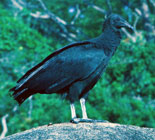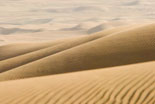 |
 |
 |
 |
|
 |
|
"Dancing Star Animal Sanctuaries"
By Dr. Michael Tobias and Jane Gray Morrison
As a metaphor for the larger world of species at risk, Dancing Star Foundation’s animal sanctuaries in California are – like so many sanctuaries around the world – focused upon the very serious realities of marginalized “domesticated” and “wild” individuals whose lives have been haunted by the ways of the world. All these animals were rescued from circumstances that would otherwise have spelled their doom.
Cows and steers, for example, have typical life spans in human captivity of less than two years. These are the ones destined to end up in some consumer product, or on a dinner plate. In the wild, however, a bovine may live twenty-five year; burros between forty and sixty years.
The distinctions between “wild” and “domestic” are increasingly blurred as new research reveals the common sense logic that when any animal is given its freedom, he/she is likely to respond with primordial joy; a physiological response that can never be blunted. Human practices worldwide currently amount to the slaughter of well over fifty billion animals per year for human consumption. If you multiply all those species times the millions of individuals found, on average, within each species category, we begin to grasp some sense of the multitudes of lives that are lost beneath the oblivious runaway train that is human destruction. In the wake of this trespass by Homo sapiens in the name of expediency, development, taste buds, consumer habits, indifference or outright cruelty, the sanctuary movement has converged thousands of years of human love and compassion, spiritual tradition, ethical practices, tolerance and rationality into a pragmatic idealism that seeks to shelter, nurture and give back to the world, not merely exploit it.
Beginning during the Paleolithic era, twenty to thirty thousand years ago, when artisans rendered certain cave habitats as “off limits” or “sacred space” - cave walls upon which were painted with great acuity and tenderness the lives of other animals observed by our ancestors - and continuing to the 12th century with the creation of one of the first wildlife sanctuaries in Europe at Epping Forest in today’s London, the sanctuary movement has gathered great steam. In 1832 dozens of hot springs in the Ouachita Mountains of Arkansas were protected, as were subsequent regions in Prussia, and then at the Yosemite Valley and Mariposa Grove of Giant Sequoias on June 30th, 1864. Eight years later, in 1872, Yellowstone was enshrined as the world’s first National Park. At that time, President Ulysses S. Grant stated that Yellowstone was to be “dedicated and set apart as a public park or pleasuring ground for the benefit and enjoyment of the people.” Soon after, Australia, Canada and New Zealand followed America’s lead and the idea of national parks took hold worldwide with over 100 nations today containing national parks, including two in as poor a country as Haiti – Pic Macaya and La Visite.1
A year prior to the enshrining of Yellowstone, the U.S. Congress had created a U.S. Commission on Fish and Fisheries because of the fact that already there had been a noticeable decline in fish numbers, particularly salmon. In the following decades invasive species harmful to agricultural crops were studied and the U.S. Department of Agriculture sector focused on this problem under the aegis of what would be called the Bureau of Biological Survey. One of the most important laws in U.S. legal history – The Lacey Act of 1900 – became an important hallmark of the Biological Survey, with an intention of inhibiting the illegal “taking” of protected wildlife species. Three years later, President Theodore Roosevelt placed Pelican Island, Florida within jurisdiction of the Biological Survey, making it the first of what was to become (as of 2010) 551 national wildlife refuges, in addition to 37 wetland management districts, a system comprising over 150 million acres of protected area across the U.S.2 Meanwhile, America’s National Parks now comprise an additional 83.6 million acres.
Worldwide today there are some 115,000 protected areas. Each is a sanctuary protecting nearly 5 billion acres terrestrially, or approximately 12% of the planet. On the marine front, there is as yet much work to be done, with less than 1% of the oceans under protective umbrellas, and nearly all of the major global fisheries being hammered, notwithstanding the realization that fish feces may well be one of the important mechanisms the oceans have to remove CO2 from the atmosphere and thus help inhibit rapid global warming.3
With possibly as many as 100 million known species co-habiting the earth with us – each species consisting of possibly millions of individuals – and the stark likelihood that the human species could drive to extinction as much as 60% of all that life during this century according to a growing consensus of scientists, the sanctuary movement and every backyard haven, city, region, state and national park given to native species which, in turn, can help other native species, or migratory species, collectively represent a colossal challenge to individuals, communities, lawmakers and political officials, to save critical habitat.
We stand, all of us, at the threshold of a singular determination: either we shall succeed or fail as a species. That will be determined by the resolve with which we engage life, rather than willy-nilly destroying it. We must foster and nurture, taking every available opportunity to extend a loving hand, making hard choices, embracing the challenge of the sanctuary movement with the realization that we can’t save all life, nor is that a feasible ideal, or one in sync with evolution. What we can do, if we are willing to try, is to behave decently, to love unstintingly and come through this recent mayhem of human-induced extinctions with dignity, not dishonor.
In the end, life depends on our species to get it right and this generation is the defining moment. We must become an empathic civilization. We are capable of that. Meanwhile, Life and death depend on the choices each of us make today.
1. See Sanctuary: Global Oases of Innocence by Michael Tobias and Jane Gray Morrison, With a Foreword by Her Majesty Ashi Dorji Wangmo Wangchuck, Queen of His Majesty the Fourth King of Bhutan, Tulsa and San Francisco: Council Oak Books, A Dancing Star Foundation Book, 2008, pp. xii-xiii.
2. See “U.S. Fish & Wildlife Service National Wildlife Refuge System,” www.fws.gov/refuges/
3. See R. W. Wilson, F. J. Millero, J. R. Taylor, P. J. Walsh, V. Christensen, S. Jennings, M. Grosell (2009). “Contribution of Fish to the Marine Inorganic Carbon Cycle,” Science, 323 (5912), 3592 DOI: 10.1126/science. 1157972
![]() BACK TO TOP
BACK TO TOP

